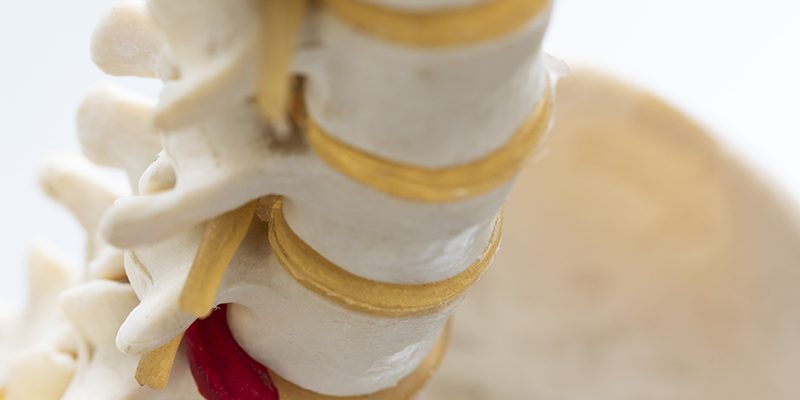A lumbar disc is a spongy cushion between the bones in the spine called vertebrae. The disc has a soft, jellylike center that acts as a shock absorber. It allows the spine to bend and twist. A lumbar disc herniation is when the disc ruptures or bulges. This is also known as a slipped or ruptured disc.
Disc herniation often occurs in the lower region of the back, which is lumbar. They can strike in the cervical or thoracic regions. Respectively, these appear in the neck and the middle of the back above the lumbar.
Symptoms
A bulging disc or its fragments can press on the nerve or spinal cord. This can result in various symptoms. These are the most common symptoms of lumbar disc herniation:
- Back or leg pain
- Tingling or numbness
- Weakness in one or both legs
It’s also possible for someone to have trouble walking or moving their feet or toes. People with pain that shoots from the buttocks down to the leg may be experiencing sciatica. Contact a specialist if you have sciatica or numbness, tingling, or weakness.
Lumbar Disc Herniation Causes
A herniation can be caused by gradual aging-related wear and tear. This is referred to as disc degeneration. Here are the potential causes of a lumbar disc herniation:
- Wear and tear from aging
- Repetitive activity that strains the back
- A traumatic injury
- Obesity
- Frequent driving
- Lack of physical activity
Aging increases the risk because the discs grow less pliable. Thus, they weaken and shrink. Physical activity helps strengthen the back and stomach muscles. Those who don’t do physical activity can be more prone to a disc herniation. Those who work in physically demanding jobs are at a greater risk for a disc herniation.
What to Expect When Visiting a Disc Herniation Specialist
The healthcare staff will review the patient’s medical history and symptoms. A physical exam follows in which the doctor may check reflexes, muscle strength, and location of the pain. Here the tests the doctor may request:
- MRI: Creates images of the body’s internal instructions with radio waves and magnetic fields. It may locate the herniated disc and the affected nerves.
- CT scan: Takes x-rays to create cross-sectional images of the spine and surrounding structures.
- Myelogram: Injects dye into the spinal cord to provide greater contrast of the structures.
- X-ray: Helps rules out other causes of back pain.
- Nerve tests: Measures electrical pulses in the nerve tissue to identify the location of the nerve damage. It may be a nerve conduction study or an electromyography (EMG).
Treatment
Depending on the outcome of the exam and testing, the doctor will make recommendations on treatment. Often, patients take pain medication and modify activities to avoid aggravating the pain.
The doctor may recommend the following pain medication:
- Over-the-counter pain medications
- Muscle relaxers
- Cortisone injections
- Opioids
Physical therapy can help the pain. The doctor will refer the patient to a physical therapist who demonstrates exercises designed to minimize herniated disc pain.
The good news is that a disc herniation rarely requires surgery. And it’s used only as a last resort or for pain that can’t be managed.
Have a question? Please contact us or call 214-823-2052. We have two conveniently located offices in Addison and Dallas serving patients in Dallas, Addison, Plano, Frisco, Garland, and other cities in the DFW metroplex.







